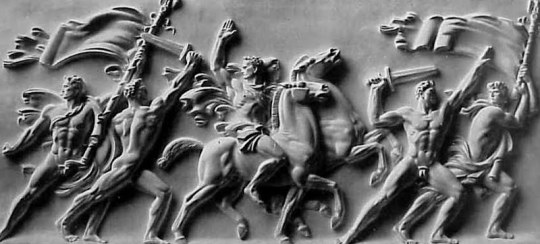Quote
When, therefore, the four passions of the soul— which are joy, grief, hope and fear— are calmed through continual mortification; when the natural desires have been lulled to sleep, in the sensual nature of the soul, by means of habitual times of aridity; and when the harmony of the senses and the interior faculties causes a suspension of labour and a cessation from the work of meditation, as we have said (which is the dwelling and the household of the lower part of the soul), these enemies cannot obstruct this spiritual liberty, and the house remains at rest and quiet, as says the following line:
My house being now at rest.
St. John of the Cross, Dark Night of the Soul (via eternal-echoes)
42 notes
·
View notes
Quote
We must love them both, those whose opinions we share and those whose opinions we reject, for both have labored in the search for truth, and both have helped us in finding it.
Saint Thomas Aquinas (via eternal-echoes)
415 notes
·
View notes
Quote
Every right is married to a duty, every freedom owes a corresponding responsibility.
Russell Kirk (via a-life-of-charm-and-grace)
122 notes
·
View notes
Quote
One of the painful signs of years of dumbed-down education is how many people are unable to make a coherent argument. They can vent their emotions, question other people’s motives, make bold assertions, repeat slogans– anything except reason.
Thomas Sowell (1930-) American economist. (via philosophicalconservatism)
199 notes
·
View notes
Photo
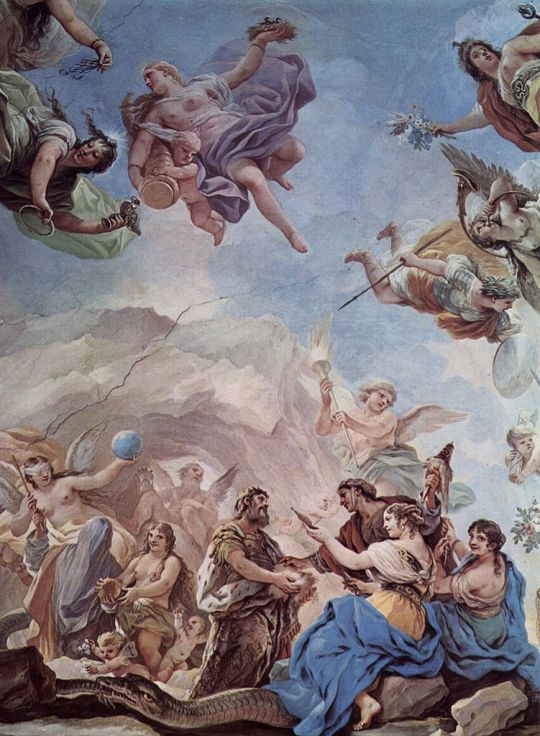
The Creation of Man (detail of decorative ceiling), 1686, Luca Giordano
43 notes
·
View notes
Photo
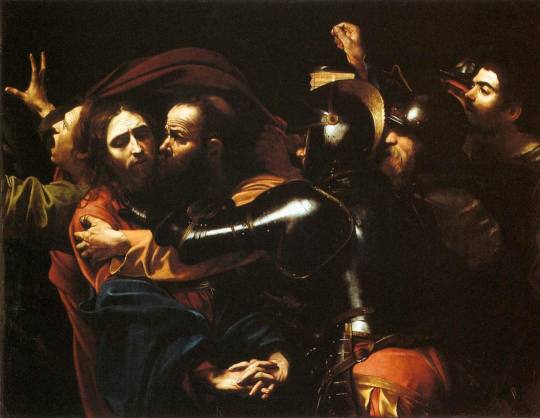
“Judas is neither a master of evil nor the figure of a demoniacal power of darkness but rather a sycophant who bows before the anonymous power of changing moods and current fashions. But it is precisely this anonymous power that crucified Jesus, for it was anonymous voices that cried ‘away with him! Crucify him!’” - Pope Benedict XVI
99 notes
·
View notes
Quote
Love of bustle is not industry – it is only the restlessness of a hunted mind.
Seneca, Moral Letters to Lucilius (via philosophybits)
197 notes
·
View notes
Photo

Truth never changes; it is the same now, yesterday, and forever, in itself; but our relations towards truth may change, for that which is hidden from us today may become known to us tomorrow. - James Cardinal Gibbons
34 notes
·
View notes
Photo
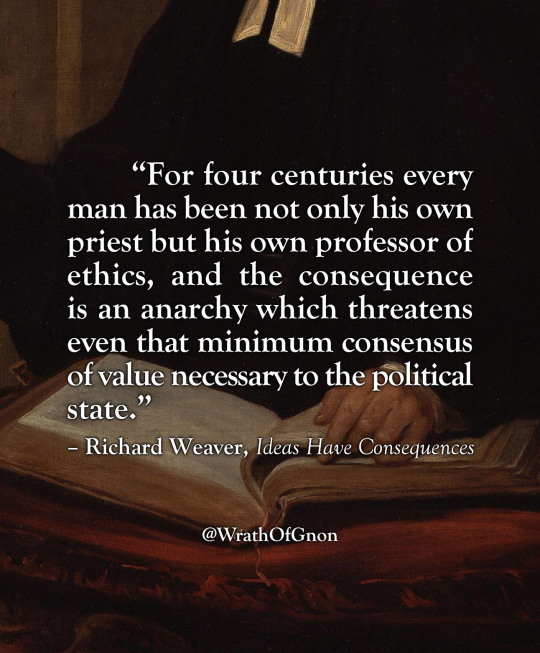
“For four centuries every man has been not only his own priest but his own professor of ethics, and the consequence is an anarchy which threatens even that minimum consensus of value necessary to the political state.”
– Richard Weaver, Ideas Have Consequences
149 notes
·
View notes
Photo
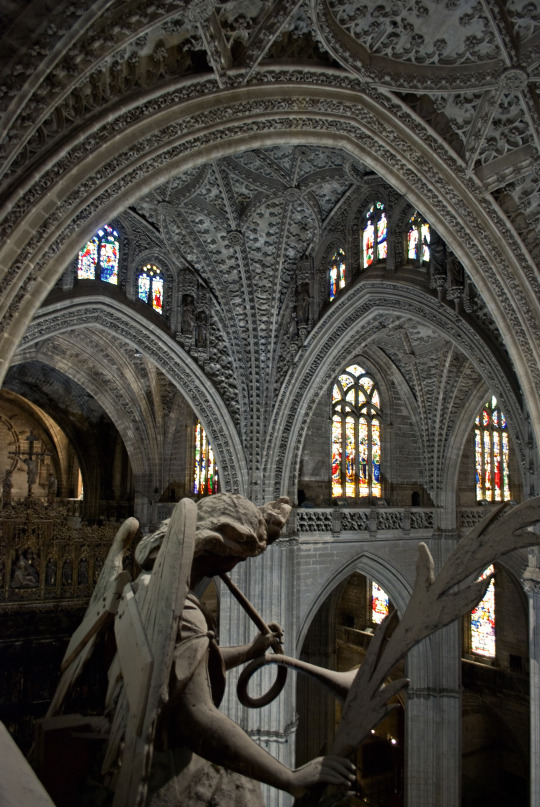
Seville Cathedral, a Roman Catholic cathedral in Seville, Andalusia, was built to demonstrate the city’s wealth, as it had become a major trading center in the years after the Reconquista in 1248.
⚜ Gothic month on @mynocturnality
1K notes
·
View notes
Text
"Some young men are so ill-informed as to suppose that absence of restraint is the same thing as freedom, whereas, by unchaining the passions, it makes them slaves to a set of masters more tyrannical than all the teachers and mentors of childhood."
— Plutarch
13 notes
·
View notes
Text
For over two thousand years the figure of Satan, both as a theme of poetico-religious thinking and artistic creation, and as a mythologem, has been a constant psychological expression, having its source in the unconscious evolution of ‘metaphysical’ images.
We should go very wrong in our judgement if we assumed that ideas such as this derive from rationalistic thinking, All the old ideas of God, indeed thought itself, and particularly numinous thought, have their origin in experience. Primitive man does not think his thoughts, they simply appear in his mind. Purposive and directed thinking is a relatively late human achievement. The numinous image is far more an expression of essentially unconscious processes than a product of rational inference. Consequently it falls into the category of psychological objects, and this raises the question of the underlying psychological presuppositions. We have to imagine a millennial process of symbol-formation which presses towards consciousness, beginning in the darkness of prehistory with primordial or archetypal images, and gradually developing and differentiating these images into conscious creations.
The history of religion in the West can be taken as an illustration of this: I mean the historical development of dogma, which also includes the figure of Satan. One of the best-known archetypes, lost in the grey mists of antiquity, is the triad of gods. In the early centuries of Christianity it reappears in the Christian formula of the Trinity, whose pagan version is Hermes ter unus. Nor is it difficult to see that the great goddess of the Ephesians has been resurrected in the Theotokos. This latter problem, after lying dormant for centuries, came into circulation again with the dogma of the Immaculate Conception and, more recently, of the Assumption of the Virgin. The image of the mediatrix rounds itself out to almost classical perfection, and it is especially noteworthy that behind the solemn promulgation of the dogma there stands no arbitrary tenet of papal authority but an anonymous movement of the Catholic world. The numerous miracles of the Virgin which preceded it are equally autochthonous; they are genuine and legitimate experiences springing directly from the unconscious psychic life of the people.
I do not wish to multiply examples needlessly, but only to make it clear that the figure of Satan, too, has undergone a curious development, from the time of his first undistinguished appearance in the Old Testament texts to his heyday in Christianity. He achieved notoriety as the personification of the adverse principle of evil, though by no means for the first time, as we meet him centuries earlier in the ancient Egyptian Set and the Persian Ahriman. Persian influences have been conjectured as mainly responsible for the Christian devil. But the real cause of his differentiation into a separate figure is the conception of God as the summum bonum, which stands in sharp contrast to the Old Testament view and which, for reasons of psychic balance, inevitably requires the existence of an infimum malum. No logical reasons are needed for this, only the natural and unconscious striving for balance and symmetry.
Hence very early on, in Clemens Romanus, we meet with the conception of Christ as the right hand and the devil as the left hand of God, not to speak of the Judaeo-Christian view which recognized two sons of God, Satan the elder and Christ the younger. The figure of the devil then rose to such exalted metaphysical heights that he had to be forcibly depotentiated, under the threatening influence of Manichacism. The depotentiation was effected—this time — by rationalistic reflection, a regular tour de force of sophistry which defined evil as a privatio boni (the privation of good).
But that did nothing to stop the belief from arising in many parts of Europe during the eleventh century, mainly under the influence of the Catharists, that it was not God but the devil who had created the world. In this way the archetype of the imperfect demiurge, who had enjoyed official recognition in Gnosticism, reappeared in altered guise. (The corresponding archetype is probably to be found in the cosmogonic jester of primitive peoples.) With the extermination of the heretics that dragged on into the fourteenth and fifteenth centuries an uneasy calm ensued, but the Reformation thrust the figure of Satan once more into the foreground.
– C.G. Jung, Preface to Werblowsky’s Lucifer and Prometheus
8 notes
·
View notes
Photo

German soldier siting out side the ruins of a building in berlin
216 notes
·
View notes
Quote
Democracy needs religion more than religion needs democracy. A religion can live without democracy; it can live under tyranny, persecution and dictatorship - not comfortably, it is true, but heroically and divinely. But democracy cannot live without religion, for without religion democracy will degenerate into demagoguery by selling itself to the highest bidder.
Archbishop Fulton Sheen (via eternal-echoes)
27 notes
·
View notes
Photo

Gustave Roud: Swiss Farmer (1940)
492 notes
·
View notes
